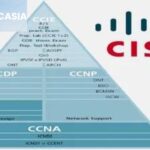These two information and communication technologies (ICTs) are navigating a change in agriculture, which is the basis of civilization. E-agriculture, or the union of farming and technology, transforms how we plan resources, cultivate food, and connect with the world market.
Various ICT Tools for Contemporary Farming
In agriculture, communication, and information technology, there is a vast range of tools that provide information to farmers, perform tasks easily and automatically, and improve decision-making.
Here are some important points:
Mobile phones: For farmers, these all-around gadgets have changed the game. Real-time weather information, market prices, agricultural alerts, and extension services can all be accessed through mobile apps. Farmers can exchange best practices, get alerts about disease dangers or pest outbreaks, and connect with specialists.
Big Data and Sensors: Some sensors that collect information on the health of crops, temperature, levels of nutrients, and soil moisture content are being put in fields at increasing rates. The collection and research of this data to provide a complete picture and information about the conditions of the field make precision agriculture technology and techniques possible.
Internet of Things (IoT): A network of linked equipment (such as sensors, drones, and tractors) gathers and sends farm data to a central platform. This makes it possible to monitor farm equipment, livestock, and crops in real-time, which facilitates proactive problem-solving and effective resource management.
Geographic Information Systems (GIS): Farmers can view their landholdings, soil types, and historical crop performance with the use of GIS technology. They can optimize land utilization, planting patterns, and resource allocation thanks to this spatial data.
Satellite imagery: Detailed satellite photos offer important information on crop health, irrigation needs, and possible yield fluctuations. Farmers can use this information to identify problem areas and implement solutions.
Providing Information to Empower Farmers
One of ICT’s most significant benefits to agriculture is increased information availability. Thanks to mobile devices and internet connectivity, farmers may now obtain real-time information on weather patterns, market prices, and the best agricultural practices. They can therefore make better decisions about when and how to plant, water, control pests, and apply fertilizer, all of which eventually lead to improved harvests and reduced waste.
Precision Farming: Data-Informed Choices
Precision agriculture is becoming more and more popular thanks to ICT. Using sensors, drones, and satellite photography, this method gathers precise information about crop health, soil conditions, and water use. After analysis, these data are used to develop specialized plans that minimize environmental effects and maximize resource allocation for each sector.
Filling the Void: Linking Farmers with Markets
Farmers and customers are becoming more connected thanks to ICT platforms. Smallholder farmers can deal directly with buyers through online markets, cutting out middlemen and guaranteeing more equitable prices. Farmers can also obtain data on customer preferences and modify their output accordingly.
Obstacles and the Path Ahead
There are obstacles to ICT adoption in agriculture, despite its enormous potential. Significant obstacles include the digital divide and limited technological access, especially in underdeveloped nations. In addition, digital literacy and training are essential for farmers to use ICT technologies efficiently.
Putting Money Into the Future of Food
To overcome these obstacles, cooperation is needed. Cooperation between governments, development organizations, and the commercial sector is necessary to guarantee farmers’ fair access to technology and capacity-building initiatives. We can foster a more profitable, efficient, and sustainable future for food production by investing in ICT in agriculture.
The Path Ahead: Fostering a Sustainable Prospect
ICT and agriculture will be closely intertwined in the future. We can realize the full potential of e-agriculture by tackling the obstacles and promoting cooperation between governmental bodies, development organizations, the commercial sector, and academic institutions.
We should concentrate on the following areas:
Investment in Rural Infrastructure: For equitable ICT adoption, it is imperative to increase internet connectivity and technology accessibility in rural areas.
Digital Literacy Programs: It is essential to fund educational initiatives that give farmers the know-how to efficiently use ICT tools and navigate digital platforms.
Creating User-Friendly and Inexpensive Solutions: Promoting research and development aimed at producing ICT solutions that are both inexpensive and suited to the requirements of smallholder farmers.
Encouraging innovation in e-agriculture through public-private partnerships and incubation centers can lead to the development of new apps and technology that will improve the sustainability and efficiency of the food system.
Issues and Things to Think About Closing the Digital Gap
Even with its enormous potential, ICT adoption in agriculture confronts several obstacles.
Digital Divide: Many farmers find it difficult to use ICT due to limited access to technology and the internet, especially in rural areas. It will take focused efforts and the creation of infrastructure to close the digital divide.
Digital literacy: To properly use ICT tools and analyze data, farmers need training. Programs to increase capacity are essential to ensuring that technology is successfully incorporated into agricultural practices.
Affordability: For smallholder farmers, the price of ICT gear and internet access may be a hurdle. To guarantee inclusion, we need affordable technology solutions, creative financial structures, and subsidies.
Forecasting the weather and managing risks:
ICT-powered weather forecasting apps enable farmers to quickly and accurately obtain weather information. By forecasting weather patterns, farmers may optimize resource utilization, manage their agricultural operations, and lessen weather-related hazards. ICT tools also assist farmers in risk management by enabling crop insurance policies that shield them from losses resulting from adverse weather or crop failure.
Crop Control and Monitoring:
ICT tools facilitate real-time agricultural monitoring with sensors, drones, and satellite data. With the aid of these technologies, farmers may obtain crucial information about crop health, pest infestations, and environmental conditions. By spotting issues early, taking prompt action to resolve them, and allocating resources as effectively as feasible through continuous crop monitoring, farmers may improve crop quality and productivity.
Impacts on Agriculture and Rural Development:
The integration of ICT in agriculture has a significant effect on both global food security and rural development. ICT solutions increase agricultural efficiency and production, which increases food output, enhances food quality, and reduces harvest losses. Moreover, ICT for agriculture fosters rural economic growth and creates employment opportunities in the technology sector.
Furthermore, ICT-enabled agriculture promotes environmentally friendly farming methods by minimizing environmental impact through optimal resource usage and reduced chemical inputs. ICT fosters inclusive rural development by providing farmers with access to markets, information, and support services, bolstering smallholder farmers and marginalized communities.
Harvesting the Rewards: How ICT is Revolutionizing Agriculture
Many advantages arise from ICT integration in agriculture:
Enhanced Productivity: Precision agriculture methods coupled with data-driven decision-making result in better crop yields and efficient use of resources. By identifying regions that need more water or fertilizer, farmers may maximize productivity while minimizing waste.
Enhanced agricultural management: task management, data gathering, and record-keeping are made easier by ICT platforms, which also streamline agricultural operations. Farmers may increase overall agricultural efficiency, keep an eye on inventory, and check expenses.
Better Market Access: By cutting out intermediaries and guaranteeing more equitable prices, online marketplaces link farmers and buyers directly. Farmers have access to consumer preferences and market data, allowing them to modify their output accordingly.
Sustainable Practices: Precision irrigation and integrated pest management are two examples of the sustainable practices that ICT enables farmers to implement. This decreases the usage of pesticides, optimizes water use, and lessens the impact on the environment.
Farmers with More Power: Having access to knowledge gives farmers the ability to decide wisely, strengthen their negotiating position, and become more robust to market and climate change swings.
The Final Word
ICT is a potential weapon that has the potential to change agriculture, but it is not a treatment. Information and communication technology (ICT) can guarantee food security for an increasing world population by providing farmers with information, enabling data-driven decision-making, and connecting them to markets. ICT will be vital in producing a more wealthy and sustainable food system as we make agriculture’s future.
Read More:
Top Biotechnology Trends and Innovations to Look For in 2023 A Complete Walkthrough
















